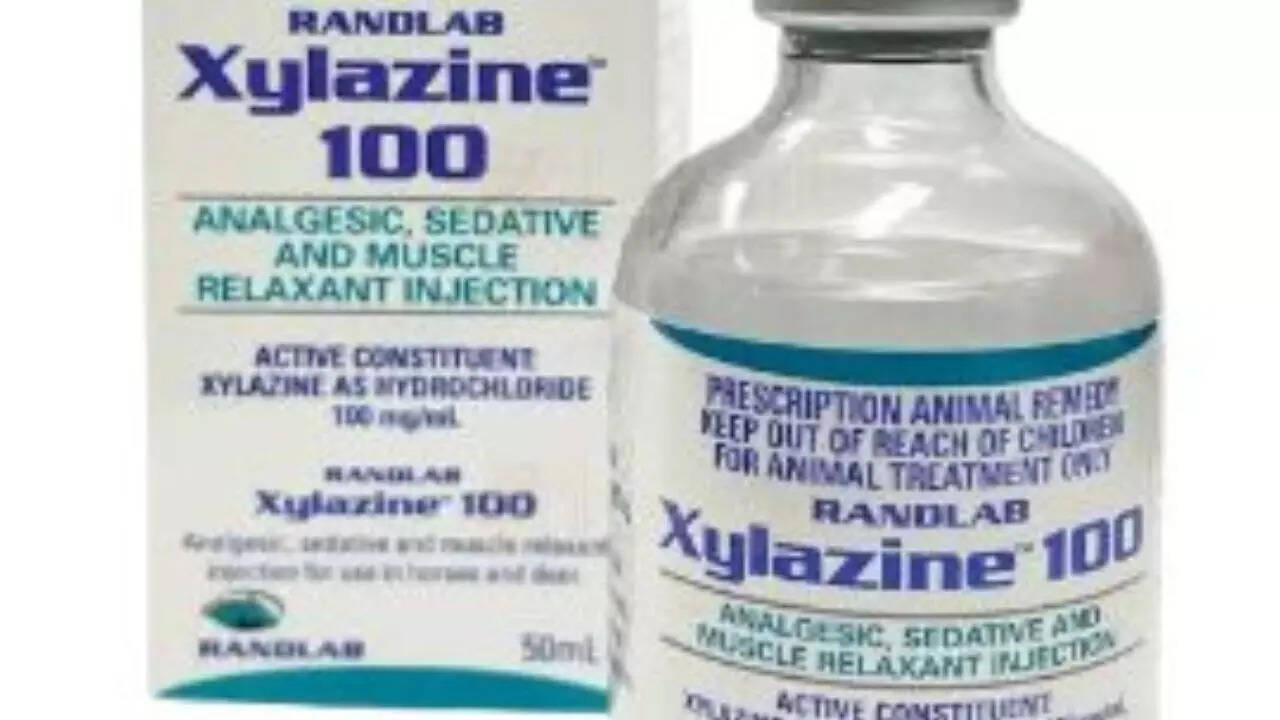Xylazine is one drug that has recently been wreaking havoc in populations across the US and the UK. Commonly referred to as “tranq” the sedative is frequently mixed with fentanyl to intensify and prolong its effects and thus has been leading to a surge in overdose deaths and severe health crises.

Image credits: X
In 2023, the US Drug Enforcement Administration found the drug in 30% of fentanyl powder samples and 6% of fentanyl pills it tested. Here, Philadelphia which is the centre of the tranq epidemic, recorded the drug’s involvement in 38% of all unintentional overdose deaths that year.Dr Asif Ilyas, an orthopaedic surgeon and opioid use researcher at Rothman Orthopaedics and Drexel University in Philadelphia, told The New York Post, “In terms of the frequency with which we’re seeing patients with xylazine-related wounds, five years ago we were not seeing any. Now we are seeing at the larger university hospitals around Philadelphia daily, if not weekly, these patients with these problems.”

Image credits: X
Xylazine is a potent α-2 adrenergic agonist, first synthesised by Bayer in 1962 as a blood pressure medication. However, later it was repurposed for veterinary use as a potent animal tranquilliser, due to its severe side effects.In the 2000s, it emerged as a street drug in Puerto Rico being used for its opioid-like effects and leading to addiction. People often mix xylazine with fentanyl to increase the effect of the drugs. After injection, it induces a trance-like state by relaxing muscles, relieving pain, and reducing norepinephrine release in the central nervous system, resulting in a zombie-like effect.
Dangerous effects of Xylazine

Image credits: X
According to the National Institute on Drug Abusexylazine depresses the central nervous system. Its consumption makes people drowsy, slows brain activity, relaxes muscles and slows heart rate and breathing. As per the agency, when mixed with other depressants like opioids, alcohol and benzodiazepines it can be life-threatening.Additionally, it constricts blood vessels causing severe skin wounds that are a sign of xylazine use. “Xylazine is an animal sedative that causes both local tissue toxicity and local vasoconstriction, which basically means it decreases blood supply and oxygen to an area, thereby making the tissue more susceptible to dying,” Ilyas said.The wounds caused by it can resemble flesh-eating bacterial infections and may require amputation. Since users inject it into arms and legs, where the damage is most severe, some cases cause limbs to auto-amputate due to tissue necrosis, leaving bones exposed and needing medical attention.The doctor also noted that a significant challenge is that patients often leave hospitals prematurely, forgoing necessary surgical treatment and care. “We can debride these wounds, and we can potentially reconstruct them depending upon the severity and depth of the injury. But if the individual goes on to continue injecting, then the intervention, the surgical reconstruction, has been for naught, and there’s significant cost and time associated with that,” Ilyas added.







